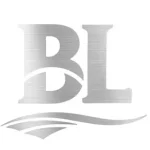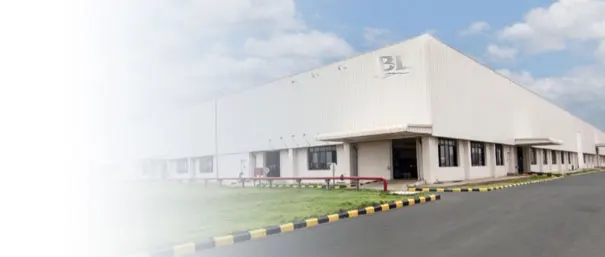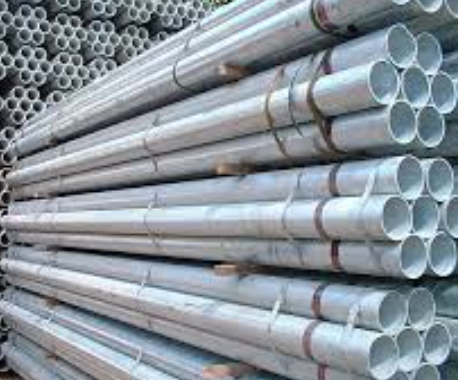Selecting the right galvanized pipe type can make or break an industrial project’s total cost of ownership, schedule reliability, and risk profile. This in-depth guide compares Electric Resistance Welded (ERW) and seamless galvanized pipes across cost, strength, corrosion performance, and application scenarios, with practical advice from BaoLi Iron & Steel Co., Ltd. (a China-based manufacturer providing customized solutions and strict quality assurance). The goal is simple: help project owners, EPC firms, and maintenance engineers choose a specification that delivers performance without overspending.


What Differentiates ERW and Seamless Galvanized Pipes?
Both ERW and seamless pipes can be hot-dip galvanized or electro-galvanized to enhance corrosion resistance. The core difference is the base pipe manufacturing process. ERW pipes are produced by forming steel sheet/coil into a cylinder and welding the longitudinal seam via high-frequency electric resistance. Seamless pipes are produced through piercing and rolling processes, eliminating a weld seam altogether. Once galvanized, both extend service life in wet, marine, or chemically harsh environments; however, mechanical behavior and cost structures diverge meaningfully.
- ERW: Economical, consistent dimensional control, fast lead times, ideal for low-to-medium pressure service and structural uses.
- Seamless: Higher intrinsic strength and uniformity at elevated pressure and temperature, preferred where cyclic loading and critical service are involved.
Cost Considerations and Lifecycle Economics
Upfront cost is typically 10–35% lower for ERW galvanized pipes in common diameters compared with seamless. For large volume projects—fire protection networks, structural bracing, cable supports—the savings can be substantial. However, the optimal choice should weigh installation constraints, long-term corrosion exposure, and pressure cycles. In high-pressure steam, superheated lines, or critical fluid transport, the superior homogeneity of seamless pipe often prevents costly downtime and inspection overhead.
| Factor | ERW Galvanized | Seamless Galvanized |
|---|---|---|
| Typical Cost | Lower; cost-efficient for large runs | Higher; premium for strength and reliability |
| Pressure Rating | Suitable for low–medium pressure services | Suitable for medium–high pressure and critical service |
| Dimensional Consistency | Good; tight tolerance from strip feed | Excellent; uniform cross-section under load |
| Corrosion Resistance | Strong when hot-dip galvanized; seam area must be controlled | Strong; no longitudinal weld seam |
| Lead Time & Availability | Faster for standard sizes and grades | Longer for special grades/thicknesses |
Strength, Pressure, and Structural Behavior
Under static loads, both types perform well when sized correctly, but seamless pipes typically offer better resistance to burst and fatigue due to the absence of a weld seam. In cyclic pressure environments (e.g., pump discharge lines, compressor headers) or elevated temperatures, seamless provides a higher safety margin. ERW, however, is structurally efficient and adequate in many building services and low-pressure utility lines. Proper nondestructive testing (NDT) of ERW weld integrity, combined with galvanizing quality control, significantly minimizes risk in general-purpose applications.
Typical Mechanical Benchmarks (Reference Ranges)
- Yield strength: 235–355 MPa for common carbon steel grades (ERW and seamless variants available).
- Tensile strength: 360–560 MPa for standard structural/pressure grades.
- Elongation: 20–30% depending on grade and heat treatment.
These ranges vary by specification (ASTM A53/A106, EN 10255, EN 10210, GB/T standards). BaoLi’s technical team provides grade selection support to match your target stress, temperature, and inspection regime.
Galvanizing Quality and Corrosion Strategy
Galvanizing adds a zinc layer that sacrifices preferentially to protect the steel substrate. For industrial sites exposed to marine air, road salts, or acidic condensates, request a measured zinc coating mass (e.g., 275 g/m² or higher as required). Smooth, continuous coverage, especially at the weld seam for ERW, is essential. Consider duplex systems (galvanized + epoxy/polyurethane topcoat) for severe atmospheres to extend maintenance intervals and reduce whole-life cost.
BaoLi Iron & Steel offers coating mass verification, adherence testing, and tailored post-galvanizing finishing. Our process control emphasizes uniform coating, drainage, and thread cleanliness where applicable.
| Parameter | Recommended Baseline | Notes |
|---|---|---|
| Zinc Coating Mass | ≥ 200–275 g/m² | Increase for coastal or chemical plants |
| Coating Type | Hot-dip galvanized | Best all-around durability |
| Topcoat (Optional) | Epoxy/PU duplex | For aggressive atmospheres |
| Weld Seam QA (ERW) | NDT + post-galv inspection | Ensure full coverage and continuity |
Application Scenarios: Where Each Pipe Excels
ERW Galvanized: Value and Speed
- Fire sprinkler mains, branch lines, and standpipes under moderate pressure ratings.
- Structural supports, handrails, cable tray supports, and HVAC condensate lines.
- Water distribution, low-pressure compressed air, utility piping in manufacturing plants.
For these uses, ERW offers an excellent balance of cost and reliability, especially with robust galvanizing and QA on the seam. Standardization and large-batch availability reduce downtime and simplify procurement.
Seamless Galvanized: Strength and Reliability
- High-pressure steam, thermal oil, and superheated service lines.
- Cyclic pressure environments, compressor discharge, pump headers, and shock-prone systems.
- Critical fluid conveyance where downtime risk outweighs upfront cost.
Seamless pipes handle elevated stresses and temperature gradients more gracefully, minimizing the probability of seam-related anomalies over long operating cycles.
Specification Tips for Better Outcomes
- Define pressure-temperature envelope early; align material grade (e.g., ASTM A53, A106) with design codes.
- Specify galvanizing mass and any duplex coating; demand coating test reports.
- For ERW, include NDT of weld seam, ovality limits, and post-galvanizing visual inspection criteria.
- Request MTRs, dimensional inspection, and hydrostatic test records where applicable.
- Consider logistics: standard lengths, end finishing (plain/threaded), and packaging for site handling.
BaoLi Iron & Steel: Manufacturing, Customization, and QA
BaoLi Iron & Steel Co., Ltd. is a China-based steel manufacturer with a global service footprint. We supply galvanized steel pipes across a wide range of diameters, wall thicknesses, and grades, supporting custom sizes and special coatings for construction, automotive, and manufacturing industries. Our teams provide selection guidance, documentation packages, and end-to-end support—from production to logistics and contract management—backed by a strict quality control system targeting 100% customer satisfaction.
If you are specifying for time-sensitive projects, our ERW pipeline programs shorten lead times without compromising essential QA. For critical systems, our seamless galvanized options deliver the reliability margin engineers expect. Explore products here:
galvanized steel pipes and
galvanized steel pipe.
Quick Selection Heuristic
Use the following rule-of-thumb when making a preliminary choice before detailed calculations and standards verification:
- Choose ERW galvanized when pressure is moderate, schedules are tight, and budget efficiency is a priority, especially for structural and utility lines.
- Choose seamless galvanized when running at higher pressure/temperature or under cyclic loads where integrity and uptime are paramount.
- In coastal or chemical environments, raise coating mass or apply a duplex coating regardless of pipe type.
Case Insight: Cost vs. Performance Trade-off
A manufacturing plant expanding its utility network selected ERW galvanized pipes for water distribution and low-pressure air lines, realizing double-digit percent savings and faster installation. For a new compressor station, the same client specified seamless galvanized for discharge headers after a cost-risk analysis showed that a single unplanned outage would erase savings from a lower-spec alternative. This blended strategy optimized capital use without elevating operational risk.
Conclusion: Align Pipe Type with Service Demands
ERW vs. seamless galvanized pipes is not a binary “good vs. better” decision—it is a matter of aligning performance with specific service conditions. ERW offers strong value in general-purpose and structural contexts, while seamless provides the reliability margin for high-pressure, high-temperature, or fatigue-sensitive systems. With proper galvanizing specifications and QA, both can deliver long, low-maintenance service life.
For technical consultation, detailed quotations, and customized options, engage BaoLi Iron & Steel’s engineering team. We help define specifications, validate coatings, and manage global delivery so your project meets performance targets on time and on budget.



